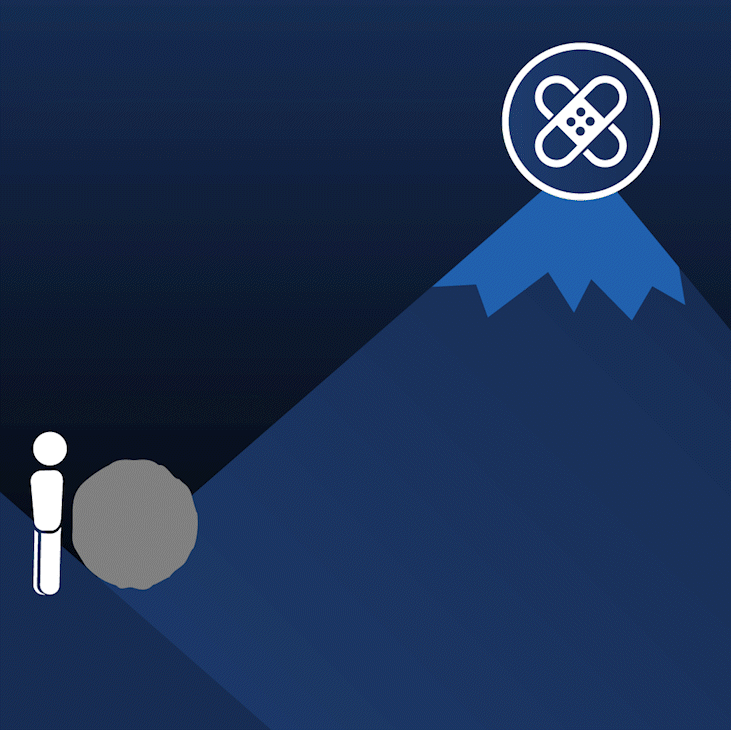Patching endpoints is a critical component of every successful IT team. Installing the latest security updates is an easy way to ensure bad actors stay out of their networks. The problem is patching is anything but easy— specifically third-party patching. A recent survey of nearly 700 IT Ops and Security leaders conducted by the Ponemon Institute identified patching and security updates as the most difficult to maintain across their endpoint network.
Watch hackers exploit common enterprise vulnerabilities
While keeping operating systems up to date is important, third-party applications provide the greatest opportunity for hackers. And we all know hackers are opportunists at heart. There are thousands of third-party applications and the list is growing, which makes patching them one of IT's most manual, time-consuming, and laborious tasks. It must feel like Sisyphus for the folks in IT; constantly pushing that boulder up the hill only to see it roll back down when the next batch of application patches drops.

A patch’s lifecycle is not trivial for IT to contend with. Each application has its own unique release schedule and timeline; once a new patch is released, IT needs to test it to ensure it doesn't break anything in the environment. Then the patch goes through a phased deployment until it's successfully installed enterprise-wide, which can take weeks. Now multiply that process by the number of 3rd-party applications your organization uses, and it will make your head spin.
So, what do organizations do to solve this insurmountable problem? The answer shouldn’t be cutting corners by skipping versions, bypassing testing, or employing a one-size fits all approach to all third-party applications. Sadly, IT teams often have no choice but to resort to cutting one of those corners if they’re strapped for time, resources, or budget.
Enter patch automation software vendors. These vendors may be able to eliminate some of these burdens, helping turn third-party patching from a major hassle to a strategic business strength. But the problem is that all vendors in this space are not created equally. Some are even making claims that their technology can't back up. So, before jumping into a long contract with a patch management vendor, make sure you consider these five things.
Top 5 things to consider when evaluating a patch automation vendor
1. True, Flexible Automation
Let's face it, IT teams have better things to do than constantly and repeatedly chase down third-party application patches. It's a time-consuming and manual job, but it's necessary. So, when looking for a vendor to help automate that process, ensure they can automate every step of the patching process. Unfortunately, many "Patch Automation" vendors claim true automation when they’re really just providing you patching metadata and a plug-in to Microsoft Endpoint Manager (MEM).
Look for the ability to create different patching automation strategies with varying testing thresholds, roll-out phases, configurations, and deployment options for various devices, user groups, or applications. Patching is not a one-size fits all problem, so make sure you don't sign up for a one-size fits all solution. Configurable out-of-the-box patching templates should be available to use or modify to create any patching deployment model your business requires.
2. Real-time Visibility and Control with AI
It's not enough to have pretty dashboards and customizable views. You should expect to be able to see the real-time status of patch deployments, successful installs, and failures. Vendors in the patching space should also be able to provide actionable insights through AI that provide you areas and opportunities to optimize your patching strategy further and create additional patching efficiencies.
63% of companies say that a lack of visibility over their endpoints is their most significant security risk. That percentage jumps when talking about an ever-growing library of third-party applications users adopt. It's impossible to keep up with all the different applications and versions. So having visibility not only into the endpoint but into the various applications and versions it's running is a must.
3. Zero-Day Support
The Cybersecurity Insiders 2022 Endpoint Security Report shows that companies are historically slow to react to the most critical patches.
43% of businesses take at least a week to roll out the most critical patches.
When the next zero-day exploit pops up, a patch automation vendor is worth its weight in gold and goes from a "nice-to-have" to "kept our business out of the headlines."
Patch automation vendors allow you to react the second a new threat is discovered – you can pause everything else, automatically push out the patch via your preferred patching strategy and ensure a 100% successful installation rate. As a result, you stay one step ahead of the bad actors and ensure your business's security and compliance.
4. Software Distribution
A massive problem with patching is that despite IT's best efforts to find, test, and distribute the patch - the larger the enterprise gets, and the further the endpoints move toward the edge, the less reliable legacy content distribution methods become. Whether it's Patch Tuesday or just a standard security update, distributing that content across the globe to each endpoint can be a headache and often very unreliable. Some vendors in the space plug into and rely on MEM for patch distribution, but even still, completion rates rarely hit 100%.
Look for an automated patching solution that is compatible and improves upon your MEM investment but is not reliant on it and won't break your current workloads.
5. Set it and forget it
Automating the 3rd-party patch process will somewhat reduce the need for human intervention. If you’re ready to eliminate the need for human intervention in the entire endpoint patch process, then look no further than the OneSite Patch Management solution. With this type of solution, you can express how you want your patching handled by the business unit, application, and user. Then the patching tool will automatically execute your strategies repeatedly without requiring you to do a single thing. The moment a new patch version is available, the automated endpoint patching tool will find it, check which deployment strategy you have chosen, and execute it across your enterprise automatically, with zero human intervention. Set it and forget it; allow your IT team to spend their time working on core business strategies and let OneSite Patch handle the patching.
Patching 3rd-party applications can seem like an insurmountable task, but there is help out there. Endpoint patching vendors can help take this manual task and turn it into a business strength. Now you are equipped with the right questions to ask when evaluating these solutions.
To hear how world-famous hackers Kevin Mitnick and Bryan Seely view the importance of patching watch Adaptiva’s free, on-demand Autonomous Patch product launch webinar.






